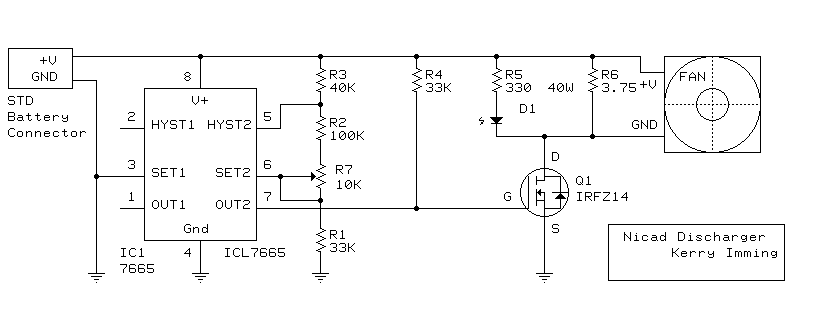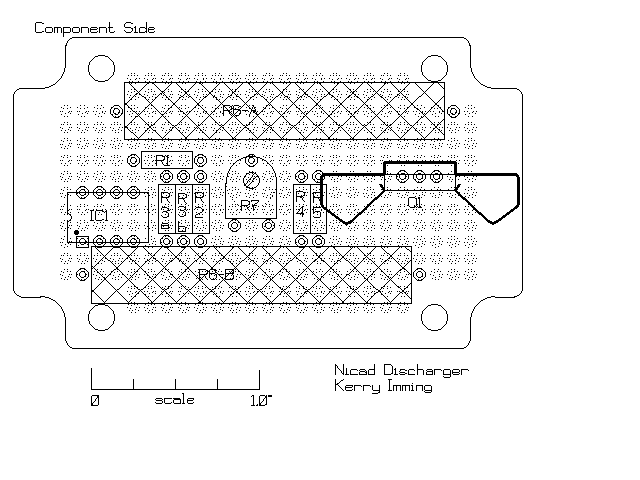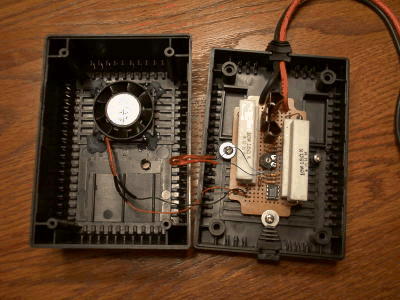polisie
Newbie level 2
- Joined
- Jul 12, 2011
- Messages
- 2
- Helped
- 0
- Reputation
- 0
- Reaction score
- 0
- Trophy points
- 1,281
- Location
- South Africa
- Activity points
- 1,294
I am trying to build a NiCad Battery Discharge Circuit on Proteus ISIS Professional. The reason being is before i buy the components I want to see if the circuit is working. By trade i am a Mechanical Engineer and with little or no experience in the electronics world.

Is the NiCad Battery Discharge Circuit OK?
R6 is an 3.75 Ohm 40 Watt (four 15 Ohm 10W power resistors in parallel), in the pictures are these the big white blocks? if so I only see 2 and not 4.


Any advice and help will greatly appreciated.
Thanks
Francois

Is the NiCad Battery Discharge Circuit OK?
R6 is an 3.75 Ohm 40 Watt (four 15 Ohm 10W power resistors in parallel), in the pictures are these the big white blocks? if so I only see 2 and not 4.


Any advice and help will greatly appreciated.
Thanks
Francois